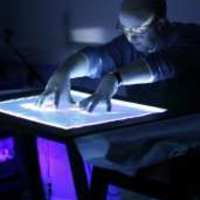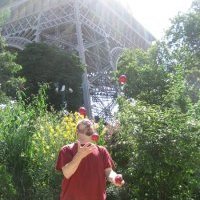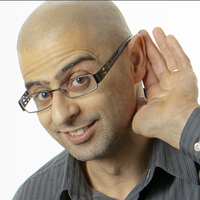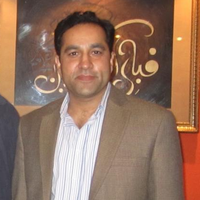
Iris Garrelfs
Related Authors
Adrian Moore
The University of Sheffield
James Elkins
School of the Art Institute of Chicago
Peter Appelbaum
Arcadia University
Eldad Tsabary
Concordia University (Canada)
Stefan Drees
Hochschule für Musik Hanns Eisler
Ece Algan
California State University, San Bernardino
Pauline Oliveros
Rensselaer Polytechnic Institute
Perdita Phillips
Independent Researcher
Katherine Butler Schofield
King's College London
Dr. Muhammad Rafiq
University of the Punjab
InterestsView All (33)










Uploads
Papers by Iris Garrelfs
There is still relatively little debate about or critical reflection on the location or nature of process in contemporary sound art’s discourse. This thesis addresses this lack of debate and reflection by developing a framework through which artists can explore and then communicate their perspectives in order to extend sound art discourse. Three key areas emerge from this approach: process, practice and discourse. This thesis investigates how they relate to and interact with each other.
In order to explore process, I have borrowed from and extended concepts from the model of conceptual blending, a theory of cognition developed by Gilles Fauconnier and Mark Turner in The way we think: conceptual blending and the mind’s hidden complexities (2002). Through the notion of inputs, which are blended through process into outputs, the model of procedural blending, adapted from conceptual blending, illustrates how new meaning is created, providing a basis for the investigation of process in sound art practice for inclusion in its discourse.
This exploration is carried out through a modular approach to methodology, which I have termed Modular Field Methodology. I first examine my own past and current work, which offers me the opportunity directly to observe process within my practice and to observe how new themes and views emerge from an engagement with new inputs. The examination of my past and current work also provides a space to gain a deeper understanding of procedural blending in sound art practice. This ‘introspective approach’ is then calibrated by an investigation of the practice of other artists, through collaborative workshops, interviews and an online magazine, each providing different spaces for a wide range of practitioners’ voices reflecting on the diversity and complexity of multimodal sound art practice.
There is still relatively little debate about or critical reflection on the location or nature of process in contemporary sound art’s discourse. This thesis addresses this lack of debate and reflection by developing a framework through which artists can explore and then communicate their perspectives in order to extend sound art discourse. Three key areas emerge from this approach: process, practice and discourse. This thesis investigates how they relate to and interact with each other.
In order to explore process, I have borrowed from and extended concepts from the model of conceptual blending, a theory of cognition developed by Gilles Fauconnier and Mark Turner in The way we think: conceptual blending and the mind’s hidden complexities (2002). Through the notion of inputs, which are blended through process into outputs, the model of procedural blending, adapted from conceptual blending, illustrates how new meaning is created, providing a basis for the investigation of process in sound art practice for inclusion in its discourse.
This exploration is carried out through a modular approach to methodology, which I have termed Modular Field Methodology. I first examine my own past and current work, which offers me the opportunity directly to observe process within my practice and to observe how new themes and views emerge from an engagement with new inputs. The examination of my past and current work also provides a space to gain a deeper understanding of procedural blending in sound art practice. This ‘introspective approach’ is then calibrated by an investigation of the practice of other artists, through collaborative workshops, interviews and an online magazine, each providing different spaces for a wide range of practitioners’ voices reflecting on the diversity and complexity of multimodal sound art practice.